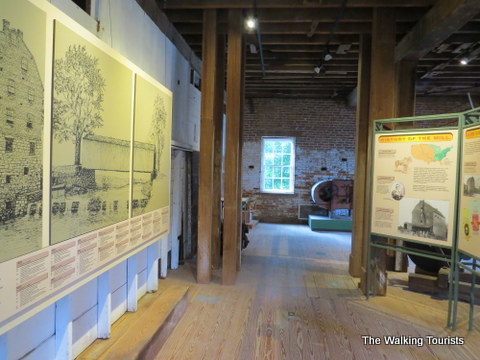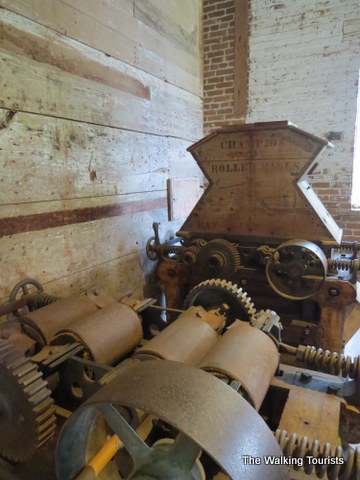Bollinger Mill dates back to early 19th century
Bollinger Mill is so much more fun to visit during summer than fighting ice in the parking lot during the winter. This marked our second visit to the mill site this year. The first visit was late in the day on one of the coldest days in the Cape Girardeau area this year.
The original mill was built by George Bollinger in this spot in 1800. The 214-year-old mill site was situated along the Whitewater River in southeast Missouri. The current mill is the third version and is now a Missouri state historic site.
The original mill was replaced with a second mill in 1825. The new mill was built using limestone. It operated until 1861, when it was destroyed by fire. It seemed the family (Bollinger died in 1842) supported the Confederates during the Civil War.
Following the Civil War, the land was sold to Solomon Burford. The mill was rebuilt to its current status in 1867. It’s located on the original limestone foundation Bollinger used. Of course, it has gone through some renovations over the years.
Burford owned the mill until 1897, when Cape County Milling Company took over operations. The company sold the mill to the Vandivort family in 1953. The family were relatives of Frederick Bollinger. In 1961, it was donated to the Cape Girardeau County Historical Society. The state took over later in the 1960s.
Bollinger Mill was used to mill grain. The operation used various styles of mills to refine the grain. Guided tours of the four-story building are offered for a small fee by state parks employees.
The tour is worth it. We learned about the process of milling grain – from uploading the grain to the top floor for the initial mill process to the actual grain refining. Depending of the needed coarseness of the grain, millers would use different pieces of equipment.
Rolling mills eventually were used to process the grain, which reduced the need for so many employees. The tour displays the various styles of roller mills.
The fourth floor also has dust collectors on display. These tools were necessary as the milling process kicked up a lot of dust.
Along the tour, we were met by a second guide – Mittens. The cute cat walked along with us up to the third floor. Apparently, she avoids the fourth floor. She has to warm to you before she’ll let you pet her.
Outside the mill is the state’s oldest remaining covered bridge. The Burfordville Covered Bridge was likely completed after the Civil War, according to available information. The bridge was located on a road that connected Burfordville to Jackson (MO) and Cape Girardeau.
The route was a toll road until 1906. Farmers grew tired of waiting for the state to lift the toll charges, so they apparently tore down the gates and used the road for free.
The bridge has been renovated through the years to ensure safety and aesthetic beauty.
The Bollinger Mill and covered bridge area is well worth the 30-minute drive from Cape Girardeau. It is a beautiful area, and has a park for picnicking nearby.
For more information on Bollinger Mill, please check out the website at http://mostateparks.com/park/bollinger-mill-state-historic-site and www.visitcape.com.
For more information on the Burfordville Covered Bridge, please visit http://mostateparks.com/page/55043/burfordville-covered-bridge.












